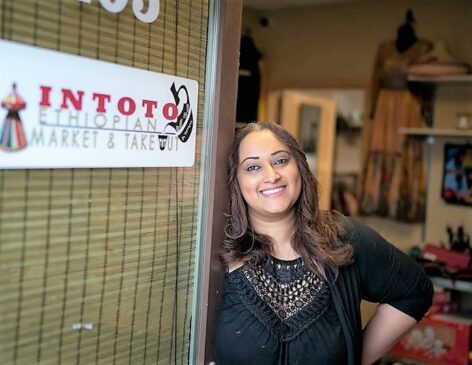Ethiopian traditional designs, the new big thing
Whether as dazzling couture on Addis Ababa catwalk or as an imprinted tribal cloth, the exclusive Ethiopian weaving and design have long been popular and have generated revenue for big designer labels along the way.

The artistic work of enterprising Ethiopian artisans contribute modern and cosmopolitan designs for the global market. From the traditional Tibeb to multi-colored cloths of Shamma, designers and artisans are turning the local traditional style into a glamorous brand of sophistication. They experiment with development of existing designs and find partnerships to enhance the showcasing of their handicrafts and traditional techniques.
Most of the budding local designers were birthed from a hope that in the course of creating quality designs,, an avenue for income and economic growth could be created. They are out not only to brand their product but also to brand the country. Few of such designers have tweaked their quality, design and colour to appeal to consumers outside of Africa. Nurturing indigenous artisans for Ethiopia’s future, branding wears is getting attention to be competitive in the global market.
Models with international fame also support the local fashion industry by patronising local designers. Liya Kebede, one of the renowned models launched her own fashion line called Lemlem incorporating indigenous fashion into her famous collections. Her collections embraced the traditional hand-woven style with the aim of offering employment and business opportunities tolong-established weavers. Although Lemlem fashion pieces are designed in New York, handwoven materials by traditional weavers are utilized.

These designs and accessories are made from rayon purchased from Merkato, the largest open-air market in Africa. The wears are made traditionally from spinning the cotton using a simple drop spindle to make the thread. The colourful threads used in the Weft, distinguish Ethiopian textiles with unique finishes of Tibeb, an intricate hand-woven border.
Local companies are partnering with other African designers to showcase their designs in events like the fashion weeks in Milan, Paris, New York amongst others. ZAAF, known for leather products such as wallets, totes, and backpacks, partnered with Korto Momolu to display its collection at the biggest fashion event. ZAAF collections have been featured in the Vogue, Elle South Africa and Lucky amongst others.
The industry still in a making and has a long way to go to attract more local and international buyers. With such initiative designers are introducing new styles with the ambitious plan of making Habesha clothing’s an everyday choice merging Ethiopian fabrics with modern fashions. The challenge is the cost of the finished products retail for up to $750.
“Local designs provide a creative platform which unveil Ethiopia’s refurbished fashion portfolio that hit the international market in recent years said Alexander Burtenshaw Country Manager of Jovago Ethiopia. “The Ethiopian fashion stands out in local and international markets with promising success.”
Source: jovago.com




YOU DID GOOD